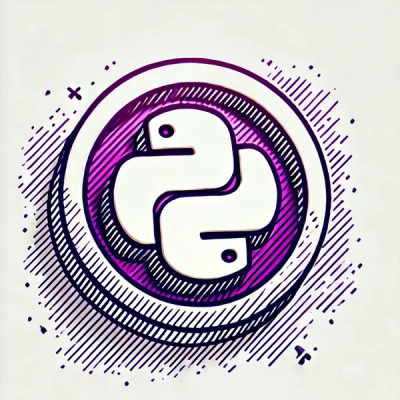
Research
PyPI Package Disguised as Instagram Growth Tool Harvests User Credentials
A deceptive PyPI package posing as an Instagram growth tool collects user credentials and sends them to third-party bot services.
This project provides a cross-platform command line interface for developers and IT administrators to develop, deploy and manage Microsoft Azure applications.
CLI 2.0 migration guide can be found here.
Note: The list of features may not be up-to-date. For accurate command details, type azure | azure -h | azure --help to navigate through the help system. Also, use azure config mode asm|arm to switch between service management (Version V1)and resource management (Version V2) of the Azure REST API.
The CLI targets "Public Azure Cloud" by default. You can get more information about the endpoints supported in different environments from here.
If you need to create an automation account for non interactive or scripting scenarios then please take a look at the documentation over here.
Please take a look at the list of supported environment variables over here.
sudo azure-uninstall -gnpm uninstall -g azure-clinpm cache clear -gnpm cache verifyC:\Users\<username>\.streamline | ~/.streamline, if present.https://github.com/Azure/azure-xplat-cli/archive/<branch-name>.tar.gznpm install –g <path to the downloaded tarball>And you should be good to go :). Note: You may require admin prompt or sudo access to install via npm.
You can install the azure-cli npm package directly.
npm install -g azure-cli
This document provides simple steps to install the latest version of node.js on a linux system. After successful installation of node.js, you can install "azure-cli" via npm as decribed above.
In a Docker host, run:
sudo docker run -it microsoft/azure-cli
You can clone the repo and use the "Dockerfile" from master branch. It should install the last released version of azure-cli.
Auto-complete is supported for Mac and Linux.
To enable it in zsh, run:
echo '. <(azure --completion)' >> .zshrc
To enable it in bash, run:
azure --completion >> ~/azure.completion.sh
# For macOS Terminal(login shell)
echo 'source ~/azure.completion.sh' >> ~/.bash_profile
# For Linux Terminal(non-login shell)
echo 'source ~/azure.completion.sh' >> ~/.bashrc
To enable it in fish, run:
echo 'azure --completion-fish | source' >> ~/.config/fish/config.fish
If you use both mechanisms on the same subscription, Azure Active Directory authentication will be used by default. If you want to go back to management certificate authentication, please use azure logout, which will remove the Azure Active Directory information and bring management certificate authentication back in.
# This will output an url and a device code for you to use browser to login
azure login
# This will prompt for your password in the console
azure login -u <your organizational ID email address>
# This will login in using a service principal
azure login -u "<service-principal-id>" -p "<key>" --service-principal --tenant "<tenant-id>"
# Download a file which contains the publish settings information of your subscription.
# This will open a browser window and ask you to log in to get the file.
azure account download
# Import the file you just downloaded.
# Notice that the file contains credential of your subscription so you don't want to make it public
# (like check in to source control, etc.).
azure account import <file location>
# Use the commands to manage your services/applications
azure site create --location "West US" mywebsite
# This will log you into the China Cloud environment.
# You can use same set of commands to manage your service/applications
azure login -u <your organizational ID email address> -e AzureChinaCloud
If you want to run xplat cli on Ubuntu, then you should install nodejs-legacy instead of nodejs. For more information please check the following links:
Please perform the installation steps in following order:
sudo apt-get install nodejs-legacy
sudo apt-get install npm
sudo npm install -g azure-cli
Starting from 0.8.0, we are adding a separate mode for Resource Manager. You can use the following command to switch between the
They are not designed to work together.
azure config mode asm # service management
azure config mode arm # resource manager
For more details on the commands, please see the command line tool reference and this How to Guide
Usage is the same as vm create command:
azure vm docker create [options] <dns-name> <image> <user-name> [password]
This command only supports Ubuntu 14.04+ and CoreOS based images. Docker is configured on the VM using HTTPS as described here: https://docs.docker.com/articles/https/ By default, generated TLS certificates are placed in the ~/.docker directory, and Docker is configured to run on port 2376. These can be configured using new options:
-dp, --docker-port [port] Port to use for docker [2376]
-dc, --docker-cert-dir [dir] Directory containing docker certs [~/.docker/]
After the VM is created. It can be used as a Docker host with the -H option or DOCKER_HOST environment variable.
docker --tls -H tcp://<my-host>.cloudapp.net:2376 info
Note: To run docker commands on windows make sure ssl agent is installed.
azure site create --location "West US" mytestsite -vv
Say, use 'Fiddler', setup the following environment variables before execute commands.
set NODE_TLS_REJECT_UNAUTHORIZED=0
set HTTPS_PROXY=http://127.0.0.1:8888
See this page for instructions that describe how to run the test suite.
For documentation on how to host Node.js applications on Microsoft Azure, please see the Microsoft Azure Node.js Developer Center.
If you would like to become an active contributor to this project please follow the instructions provided in Microsoft Azure Projects Contribution Guidelines.
Please send pull requests only to the Dev branch. Please make sure that you have checked in tests and recorded them live for your contribution. Pull requests without sufficient tests will not be accepted.
If you encounter any bugs with the library please file an issue in the Issues section of the project.
FAQs
Microsoft Azure Cross Platform Command Line tool
The npm package azure-cli receives a total of 1,054 weekly downloads. As such, azure-cli popularity was classified as popular.
We found that azure-cli demonstrated a not healthy version release cadence and project activity because the last version was released a year ago. It has 1 open source maintainer collaborating on the project.
Did you know?

Socket for GitHub automatically highlights issues in each pull request and monitors the health of all your open source dependencies. Discover the contents of your packages and block harmful activity before you install or update your dependencies.

Research
A deceptive PyPI package posing as an Instagram growth tool collects user credentials and sends them to third-party bot services.

Product
Socket now supports pylock.toml, enabling secure, reproducible Python builds with advanced scanning and full alignment with PEP 751's new standard.

Security News
Research
Socket uncovered two npm packages that register hidden HTTP endpoints to delete all files on command.